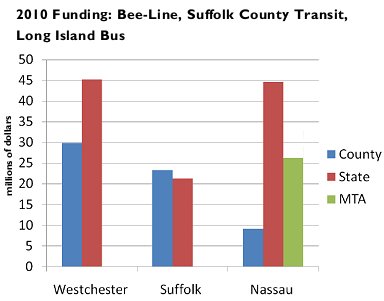 With the news this week that the Mayor’s plan to allow livery cab drivers to pick up passengers in Outer Borough was to be torpedoed by the taxi industry, Michael Bloomberg suffered yet another political defeat of a transit promise made during his 2009 campaign. Since he won election to a third team as the city’s chief executive, his tenure has been marred by marked failure in the transportation and transit arena. Despite the fact that millions of New Yorkers rely on subways, buses and taxis to get around the city every day, Bloomberg has not been able to fulfill his transit policy promises, and it appears as though his team is now subtly turning their backs on these badly needed improvements.
With the news this week that the Mayor’s plan to allow livery cab drivers to pick up passengers in Outer Borough was to be torpedoed by the taxi industry, Michael Bloomberg suffered yet another political defeat of a transit promise made during his 2009 campaign. Since he won election to a third team as the city’s chief executive, his tenure has been marred by marked failure in the transportation and transit arena. Despite the fact that millions of New Yorkers rely on subways, buses and taxis to get around the city every day, Bloomberg has not been able to fulfill his transit policy promises, and it appears as though his team is now subtly turning their backs on these badly needed improvements.
Bloomberg’s first major defeat wasn’t even that. As part of the centerpiece of his 33-point transit policy plan, Bloomberg called upon the MTA to provide free crosstown buses for everyone. Not 48 hours after securing election, the Mayor seemed to backtrack on the idea, and it has all been downhill since then.
While preparing this post, I went digging for the Mayor’s proposal, and I was shocked to find that it’s not available online any longer. His reelection site had posted it online right here in 2009, and it came with a companion PDF document that used to be available right here. Both of those links have long since been reassigned, and it is as though Bloomberg and his team are trying to erase their lofty promises from existence. I’ve tried to piece together the major components from my coverage and old articles in The Times and on Streetsblog.
It appears that Bloomberg’s proposal broke down in neat little buckets. The first concerned subway upgrades that were already in progress and out of his control. These included the expansion of the countdown clock program and a comprehensive bus-tracking program as well as F express service and a host of other quasi-populist desires the mayor cannot control.
But other transit areas were well within his purview. He proposed an expansion of the dollar van program as well as better taxi service for those beyond east of Manhattan or north of 96th St. He wanted to pilot either light rail lines or streetcars along the Brooklyn waterfront, and he wanted to usher in the expansion of bus rapid transit routes throughout the five boroughs.
What has happened to nearly every single one of those proposals has been failure. That taxi program we know is on the rocks. The group ride/dollar van program died a quiet death because the city seemingly wasn’t interested in learning how to make it work. NYC DOT has determined that streetcars for Red Hook will be too expensive and underutilized without up-zoning the area. The 34th St. Transitway — what should have been the city’s shining BRT moment — has been toned down in the face of NIMYBism and local opposition. Other ideas — an Adopt-a-Station plan to keep the subways cleaner — went nowhere.
For now, Bloomberg still has a few irons in the fire. He’s working on a plan to improve ferry service, and DOT and the MTA are still working on Select Bus Service routes. But the list of New York City transit improvements that have fallen by the way side during the first 16 months of Bloomberg’s third team have grown steadily.
Over at Market Urbanism earlier this week, Stephen Smith noted these mounting failures, and something he said struck a chord. Noting that transit reform advocates have been focused almost exclusively on defending bike lanes, it’s quite possible that we’ve lost sight of how people get around. Bike lanes should be a key part of the city’s transportation infrastructure, but tens of thousands stood to benefit instantly from the 34th St. Transitway.
Simply put, the city needs these transit improvements that haven’t gained traction, and the mayor must find a way to usher them through. Not doing so is a failure of leadership. With another two and a half years to go, Bloomberg is running out of proposals to let fall by the wayside, and already, New York’s commuters are worse off.






